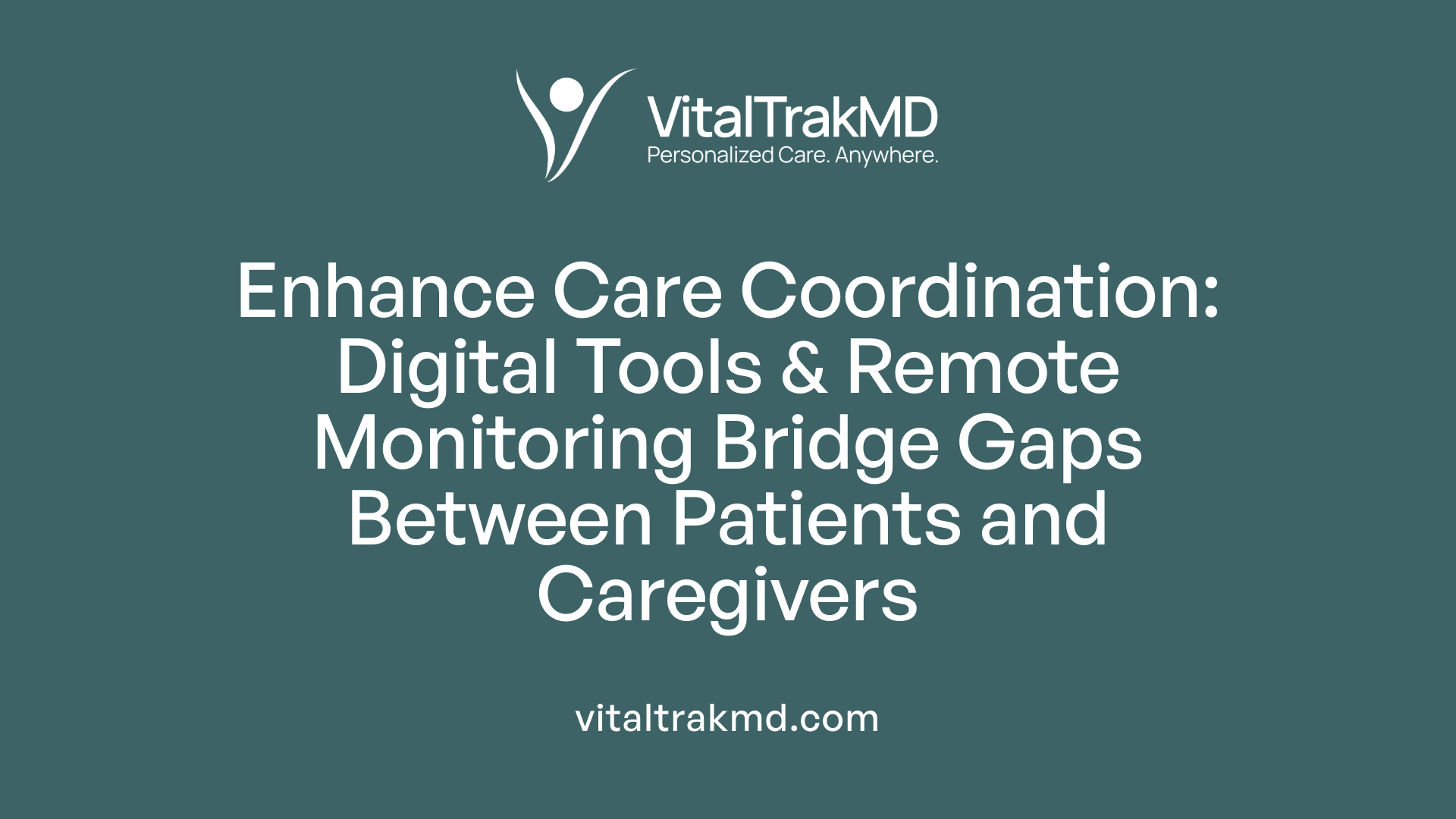Why Hybrid Programs Improve Coordination Between Caregivers and Patients

The Evolution of Healthcare Coordination
Healthcare delivery is undergoing a significant transformation through the adoption of hybrid care programs that integrate traditional in-person visits with digital telehealth services. This innovative approach empowers both patients and caregivers by fostering more flexible, accessible, and continuous communication. Such coordination is especially critical in managing wellness and weight loss programs, where sustained engagement and personalized support dictate long-term success. This article explores why hybrid programs improve coordination between caregivers and patients, detailing the benefits, challenges, and measurable impacts on patient outcomes and care efficiency.
Understanding Hybrid Healthcare Models

What Are Hybrid Healthcare Models?
Hybrid healthcare models integrate traditional in-person care with virtual healthcare services. By blending face-to-face consultations with various telehealth options, this model enhances flexibility and accessibility for patients.
How Do Hybrid Healthcare Models Combine Different Modes of Care?
Hybrid systems merge in-person clinical visits with digital health tools such as telehealth virtual visits, remote patient monitoring, online educational platforms, and mobile apps for appointment scheduling and communication. This coordinated approach enables healthcare providers to deliver continuous and personalized care tailored to patient needs.
Which Digital Tools Enable Hybrid Care?
Several digital tools empower hybrid healthcare delivery, including:
- Telehealth Services: Virtual consultations and eVisits for convenience.
- Remote Monitoring Devices: Allow tracking of chronic conditions and post-discharge care.
- Mobile Applications: Facilitate appointment bookings, reminders, patient-provider messaging.
- Online Education Resources: Support patient self-management and wellness initiatives.
- Virtual Triage Systems: Streamline prioritization and resource allocation. These technologies help bridge gaps in access and provide ongoing support, reducing barriers like transportation and scheduling conflicts.
Through these combined methods, hybrid healthcare models foster an adaptable, patient-centered system that improves engagement and health outcomes without sacrificing the benefits of traditional care.
Enhancing Patient Accessibility and Flexibility

How do hybrid programs improve patient access to care?
Hybrid healthcare models improve patient access through a blend of in-person visits and virtual services such as telehealth consultations and remote monitoring. This approach significantly reduces wait times by allowing patients to receive timely care without the need for physical travel.
Patients facing transportation challenges or mobility limitations benefit greatly from this flexibility. They can attend virtual appointments from the comfort of their homes, effectively eliminating geographic barriers that often hinder access to consistent care.
The convenience offered by hybrid programs also extends to scheduling. Patients gain more control over appointment times, accommodating their unique daily routines and reducing conflicts that might otherwise delay care.
Additionally, hybrid healthcare facilitates frequent communication and ongoing patient engagement, which is vital for managing chronic conditions and promoting wellness. This continuous interaction encourages adherence to treatment and wellness plans, ultimately supporting better health outcomes.
By combining digital tools such as virtual visits, remote monitoring, and mobile apps for scheduling, hybrid care creates an accessible, flexible, and patient-centered experience that enhances healthcare delivery for diverse populations, especially underserved or remote communities.
Supporting Long-Term Wellness and Weight Management Through Hybrid Care

What role do care programs play in supporting long-term wellness and weight management?
Care programs are essential for sustaining wellness and effective weight management by delivering continuous, personalized guidance. These programs adapt to each individual's unique needs through a combination of educational resources, behavioral coaching, and emotional support. Regular check-ins keep patients accountable and motivated, fostering lasting healthy lifestyle changes.
How does the combination of telehealth and in-person follow-ups enhance care?
Hybrid care integrates telehealth consultations with in-person follow-up visits, providing a balanced approach to wellness. Virtual visits allow patients to conveniently access nutritional guidance and medication management remotely, as seen in LifeBridge Health’s Virtual Medical Weight Loss program. Meanwhile, in-person appointments enable providers to perform comprehensive assessments and address specific health concerns, creating a seamless continuum of care.
How does hybrid care improve patient adherence and engagement in weight management?
The flexibility of hybrid care addresses common barriers such as transportation and scheduling conflicts, making it easier for patients to stay involved in their wellness plans. Frequent communication through multiple channels, including telehealth, mobile apps, and digital platforms, keeps patients engaged and informed. This continuous interaction supports adherence to personalized plans and encourages proactive management of chronic conditions, ultimately enhancing health outcomes.
Hybrid healthcare models leverage technology and traditional care to improve accessibility and patient-centeredness in weight management. By blending virtual support with face-to-face care, these programs help patients overcome challenges and sustain healthier behaviors over the long term.
Safe and Sustainable Weight Loss with Hybrid Programs

How can weight loss be achieved safely and maintained over time?
Safe weight loss is best achieved through gradual, sustainable lifestyle changes rather than drastic measures. This includes adopting a balanced nutritional plan focused on whole foods and appropriate portion sizes to ensure adequate nutrient intake. Integrating regular physical activity tailored to individual capabilities further supports healthy weight management.
Behavioral strategies such as mindful eating and setting realistic goals are important components. These approaches help individuals develop a healthier relationship with food and encourage long-term adherence to positive habits.
The hybrid healthcare model, combining in-person visits with virtual care, effectively supports these lifestyle adjustments. For instance, LifeBridge Health's Virtual Medical Weight Loss program offers personalized nutritional guidance, medication options when needed, and continuous virtual support. This ongoing telehealth engagement enables patients to stay motivated, receive timely coaching, and make adjustments as necessary from the comfort of their homes.
Continuous monitoring through telehealth platforms facilitates early identification of challenges, allowing providers to intervene promptly. This model enhances accessibility for those facing transportation or scheduling barriers, ensuring consistent care and support.
Overall, hybrid programs leverage the strengths of both virtual and in-person care to foster gradual, safe weight loss and improve the likelihood of maintaining results long-term.
Digital Tools and Remote Monitoring as Coordination Enhancers

How do digital tools enhance coordination between caregivers and patients in hybrid programs?
Digital tools are pivotal in improving the coordination and effectiveness of hybrid healthcare models. Remote patient monitoring devices enable healthcare providers to continually track chronic conditions, allowing for early detection of potential complications and more personalized treatment adjustments.
Mobile apps facilitate seamless appointment scheduling, communication, and access to educational resources, empowering patients to take an active role in managing their health from home.
Virtual triage systems streamline patient assessment, helping prioritize care needs efficiently and directing patients to the most appropriate service, whether virtual or in-person.
These technologies foster continuous communication channels between patients and caregivers, which is crucial for maintaining engagement, adherence to treatment plans, and ensuring timely interventions. This constant data sharing and interaction help tailor care, optimize health outcomes, and support patient-centered management within hybrid healthcare programs.
Operational Benefits: Productivity, Morale, and Cost Efficiency

What operational advantages do hybrid healthcare models offer?
Hybrid healthcare models significantly boost operational efficiency in multiple ways. About 56% of practices that adopted hybrid or remote work formats reported increased productivity, allowing them to manage larger patient loads effectively. This increase in capacity is evident as 61% of these practices were able to see more patients, while some experienced revenue growth, with 39% noting higher income.
Flexible work arrangements also contribute to a positive workplace culture. A striking 89% of practices noticed improved employee morale linked to remote working options, and 86% reported better morale related to flexible scheduling. These factors reduce staff turnover, cutting down recruitment and training expenses, which translates to additional financial savings for healthcare organizations.
Cost-efficiency extends to patients as well. By combining virtual and in-person care, hybrid models reduce the need for travel, saving patient expenses while minimizing missed appointments. Providers benefit from lower overhead and optimized clinic scheduling, enhancing the overall efficiency of healthcare delivery.
In summary, hybrid healthcare models provide a sustainable operational approach that improves productivity, fosters employee satisfaction, and delivers cost savings for both providers and patients.
Challenges and Solutions in Hybrid Care Implementation
What challenges arise in implementing hybrid healthcare programs and how can they be addressed?
Implementing hybrid healthcare programs presents several significant challenges that require careful management to deliver effective care. One major hurdle is technological integration and security. Healthcare providers must choose secure, HIPAA-compliant platforms that protect patient data while being user-friendly for both clinicians and patients. Ensuring robust cybersecurity is essential to maintain trust and comply with privacy regulations.
Another challenge is addressing the digital divide. Not all patients have equal access to technology or feel comfortable using it for virtual visits. This disparity can limit the reach of hybrid care models, especially among elderly populations or those in underserved regions. To bridge this gap, healthcare practices need to assess each patient's comfort level and offer education or alternative options when necessary.
Balancing remote and in-person care based on patient needs is also critical. Hybrid healthcare is not a one-size-fits-all solution; individualized treatment plans should consider patients' health conditions, technology readiness, and personal preferences. Some patients require frequent in-person assessments, while others benefit more from remote monitoring and telehealth visits.
Addressing these challenges involves thorough technology assessments to ensure chosen tools meet security and usability standards. Patient education programs can increase confidence in virtual care platforms. Additionally, flexible customization of care plans helps maintain continuity of care and maximizes patient engagement by combining in-person services with virtual support tailored to specific situations.
By tackling these issues head-on, healthcare providers can enhance the effectiveness of hybrid care models and expand access to high-quality, convenient healthcare services.
Measurable Patient Outcomes and Future Implications
How do hybrid healthcare programs impact patient outcomes and what does research show?
Hybrid healthcare programs blend in-person care with virtual services to boost patient engagement and enable early intervention. Research indicates these programs contribute to improved health outcomes, chiefly through increased communication and monitoring that help detect complications early, particularly for patients managing chronic diseases.
Studies show that outcomes for certain conditions, like mental health disorders, are comparable to those achieved with traditional in-person care. This evidence supports hybrid models as effective alternatives that maintain clinical quality while enhancing access.
Beyond improved health metrics, hybrid care enhances patient adherence to treatment and wellness plans by reducing traditional barriers such as travel and scheduling conflicts. Patients benefit from greater convenience and continuous support through telehealth consultations combined with occasional in-person follow-ups.
The future of healthcare sees increasing adoption of hybrid models, propelled by technology innovations and flexible workflows. These models hold promise for expanding healthcare access, facilitating personalized care, and integrating novel digital tools like remote monitoring and virtual triage.
As healthcare systems deepen hybrid approaches, ongoing innovation and careful implementation can further unlock their impact—improving outcomes, patient satisfaction, and healthcare system efficiency.
The Future of Patient-Caregiver Coordination is Hybrid
Hybrid healthcare programs represent a transformative model that seamlessly integrates technology with in-person care to optimize coordination between caregivers and patients. By enhancing accessibility, personalizing wellness and weight management support, and fostering continuous communication, these programs improve patient engagement, safety, and outcomes. Operational benefits such as increased productivity and morale further strengthen healthcare delivery. While challenges remain, thoughtful implementation strategies and robust digital tools position hybrid care to be central in future health paradigms, empowering patients and providers alike to collaboratively achieve sustained wellness and improved quality of care.
References
- How the hybrid healthcare model is transforming patient ...
- The Benefits Of Hybrid Work Models In Healthcare
- What Is Hybrid Healthcare? | Tools, Benefits, and Solutions
- Rapid synthesis: Optimizing the use of hybrid-care models ...
- Diet & Weight Loss
- Designing and Managing Effective Wellness Programs
- Best Workplace Wellness Programs for 2025
Recent articles
Want to Feel Better and Live Healthier?
Join hundreds of patients taking control of their health with personalized care that fits their life – not the other way around.
Rated 4.8/5 by 32+ customers







